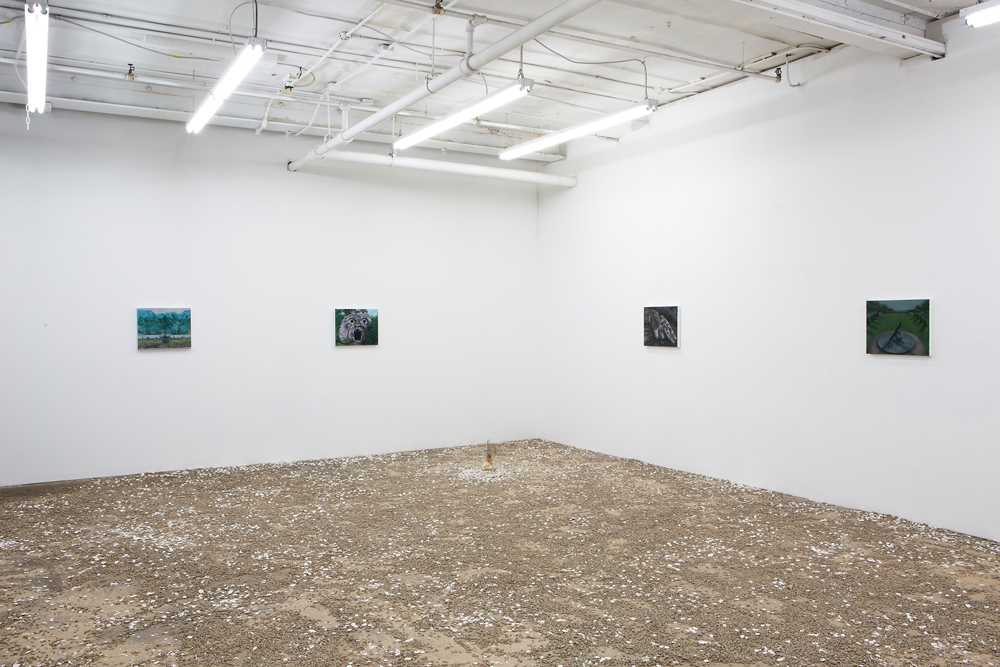
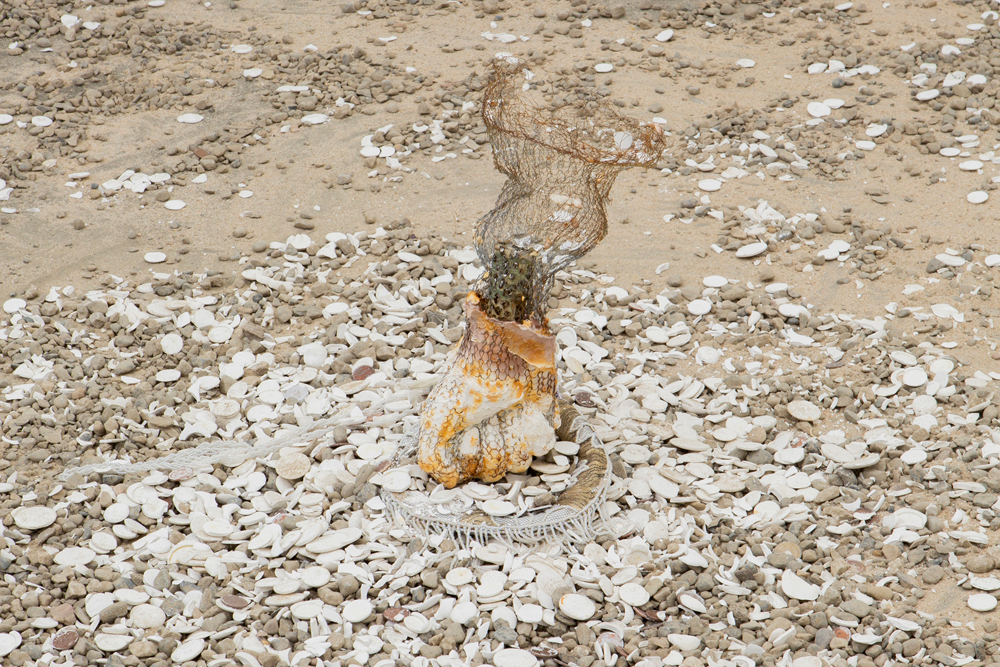
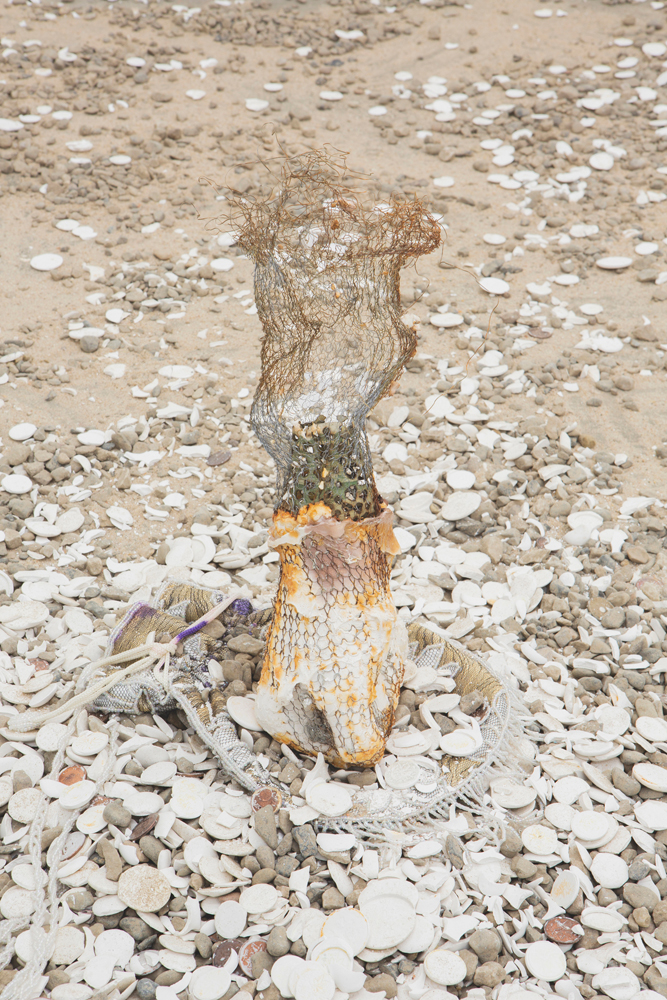
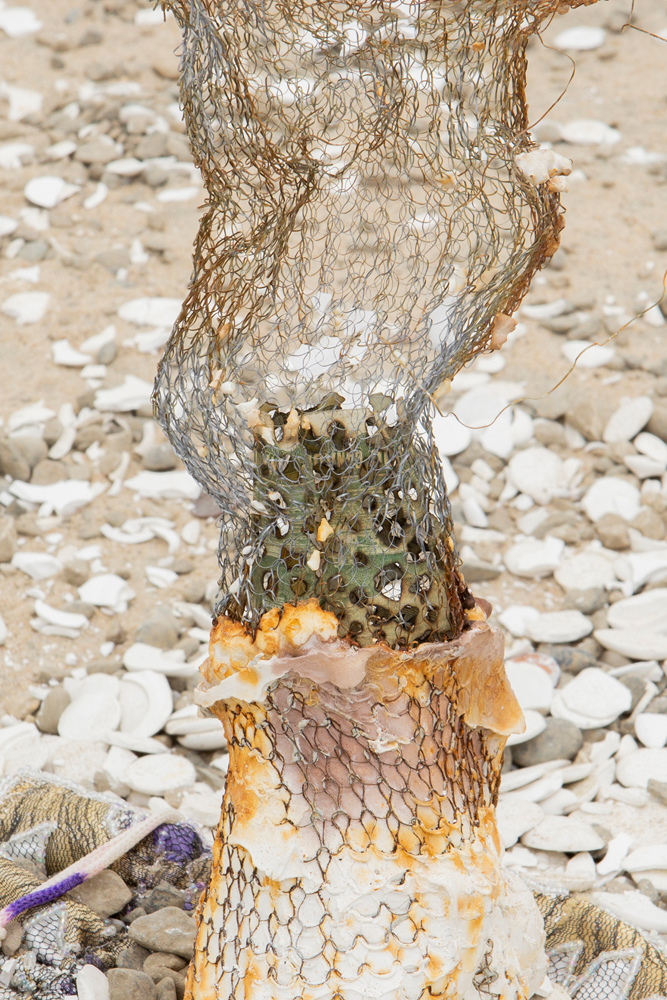
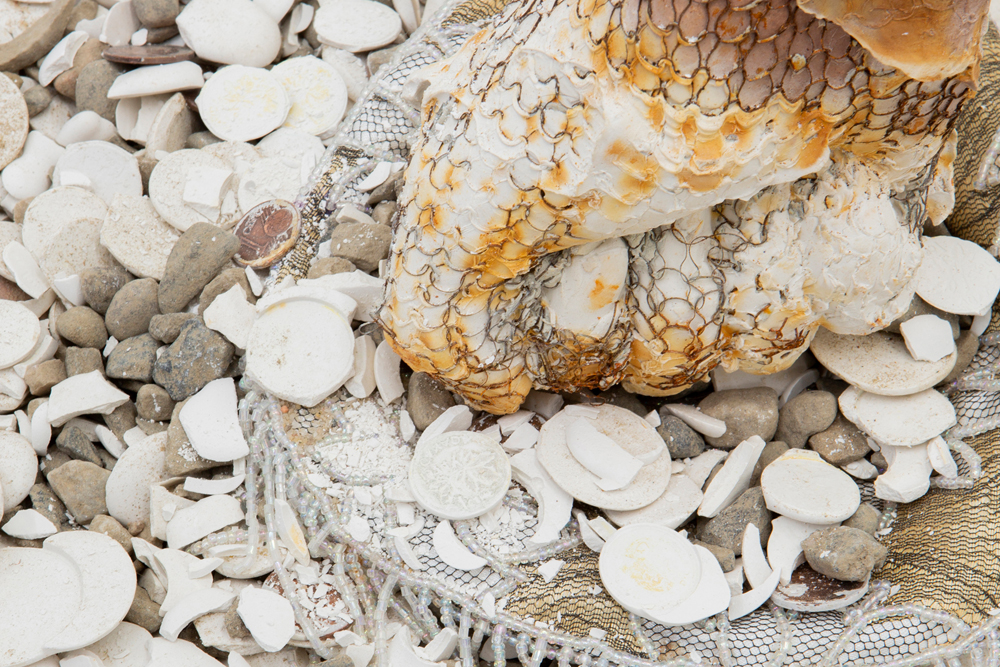
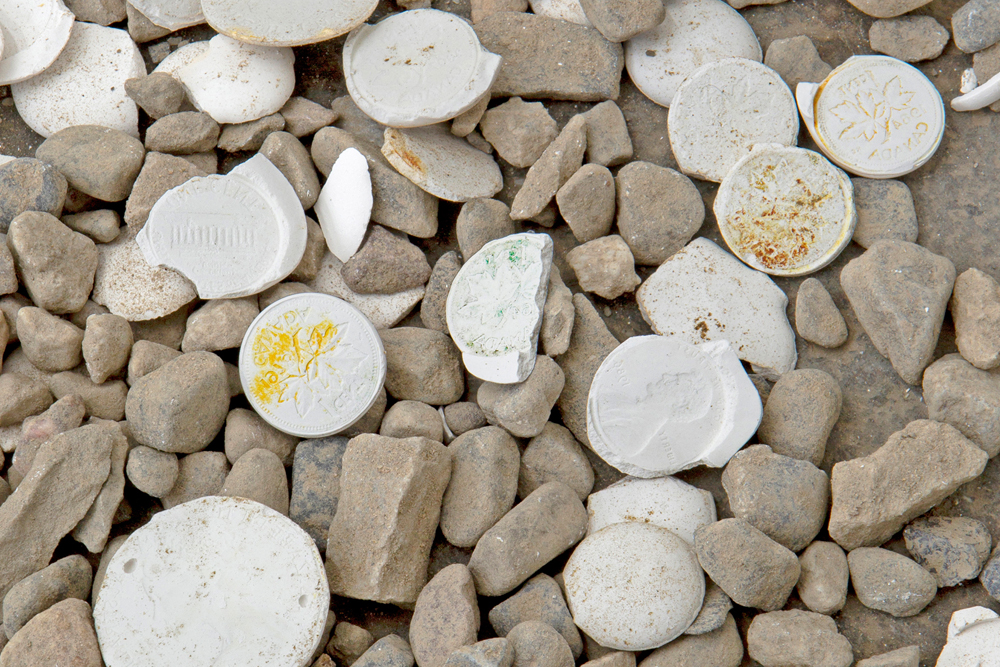
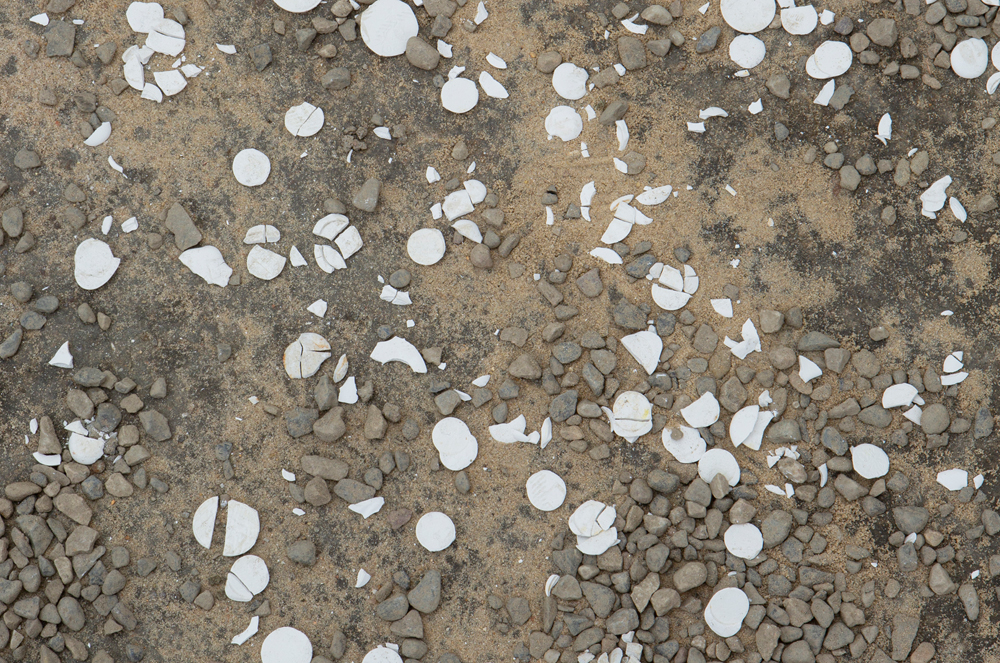
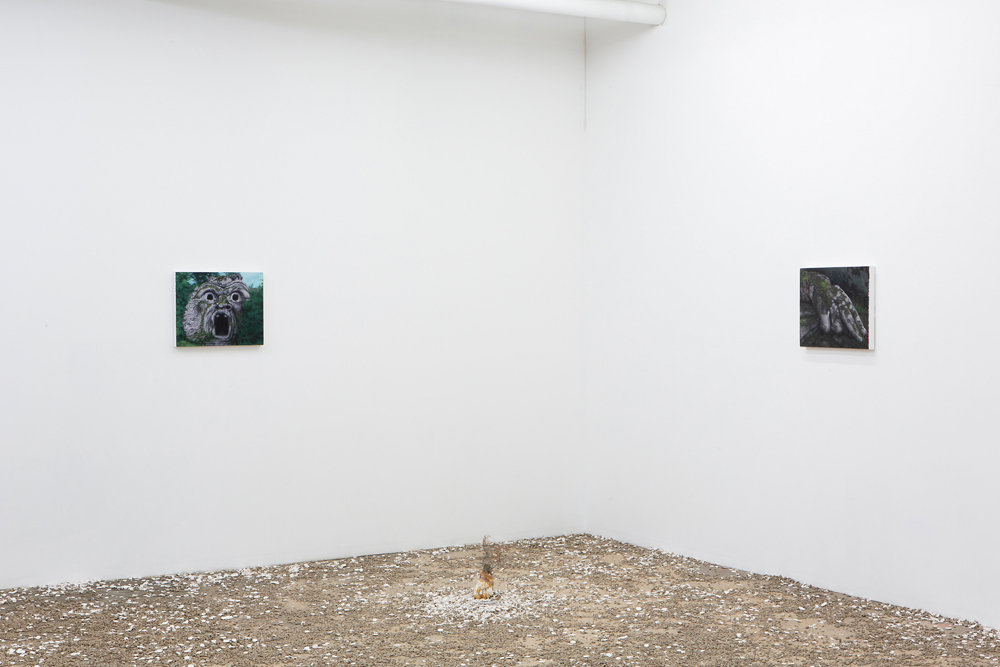
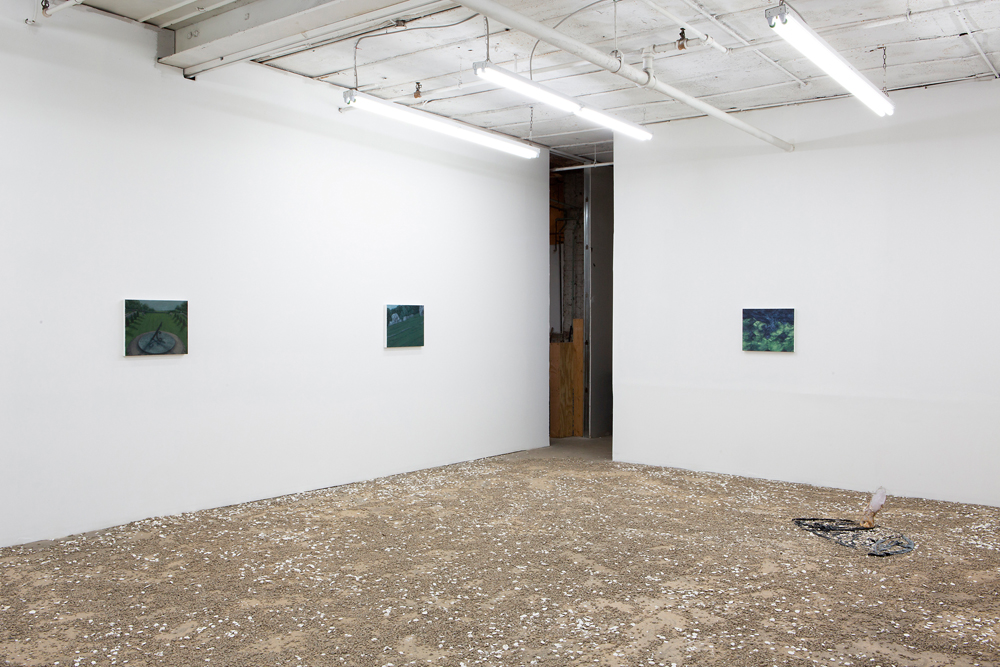
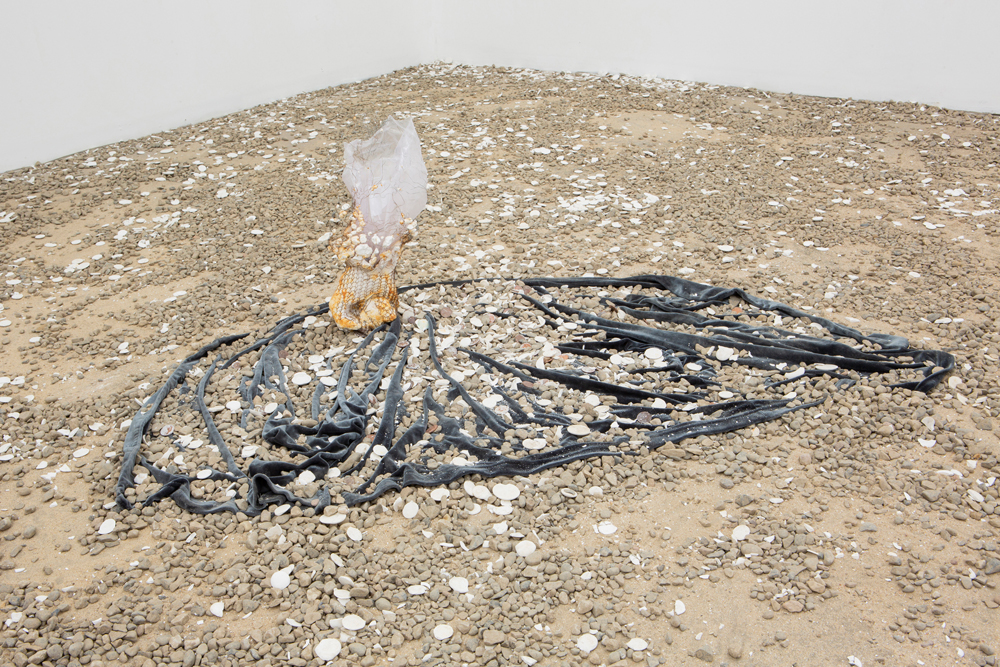
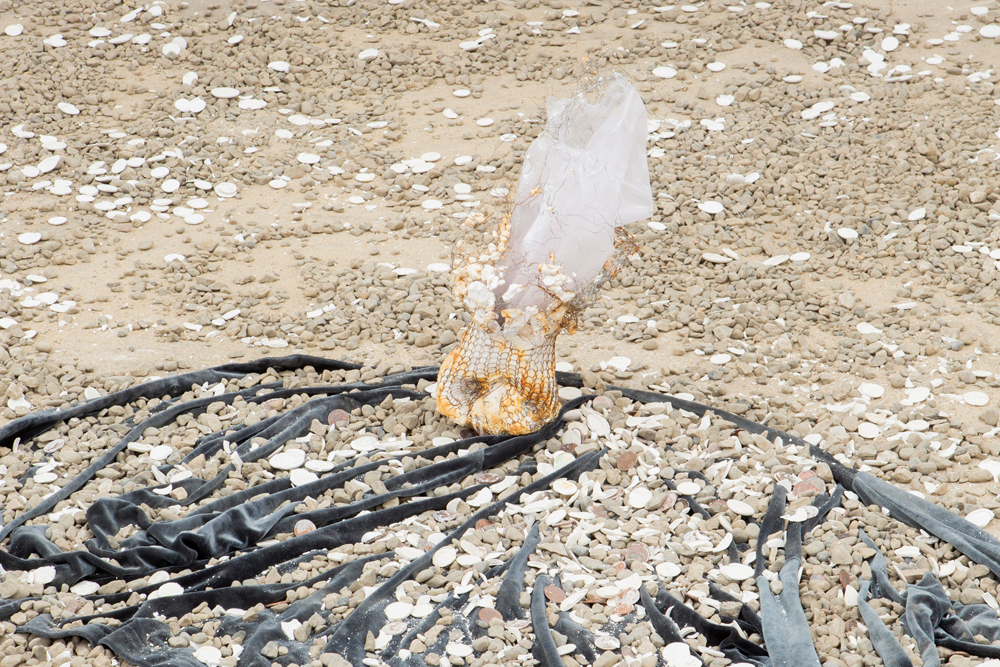
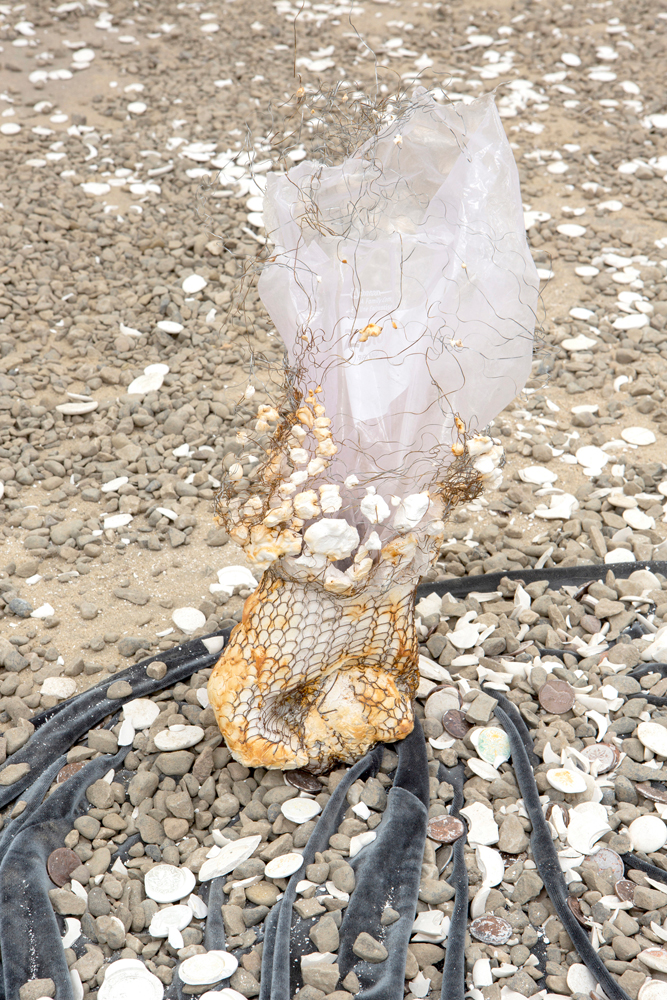
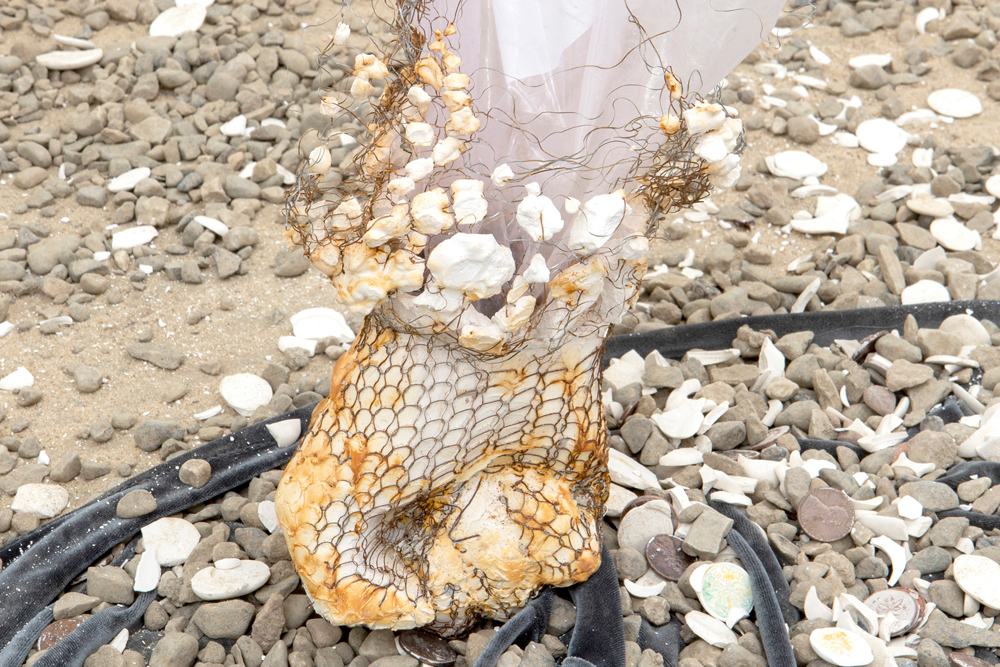
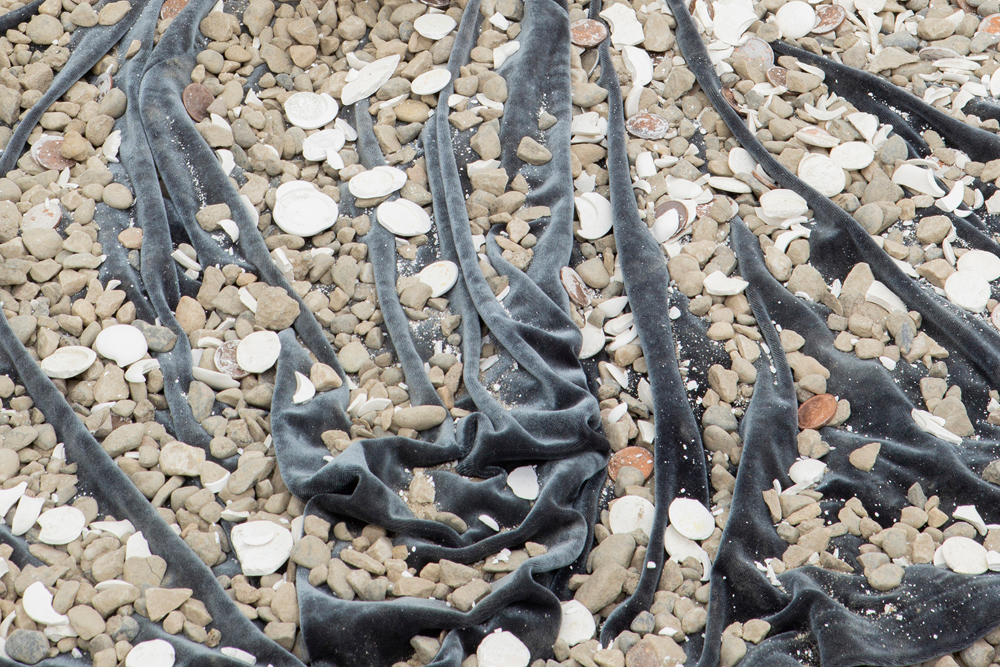
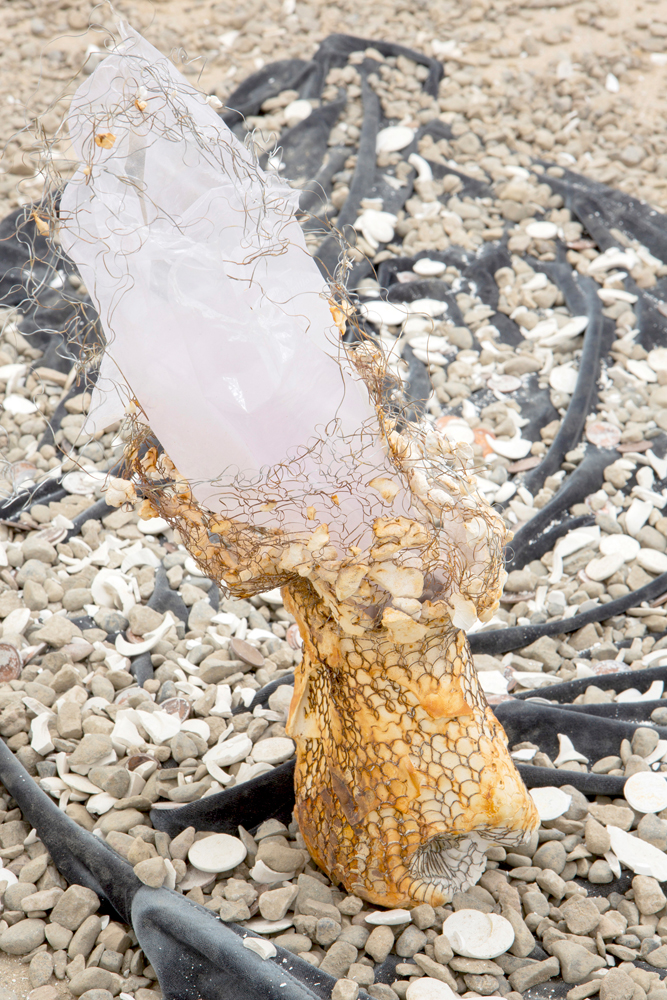
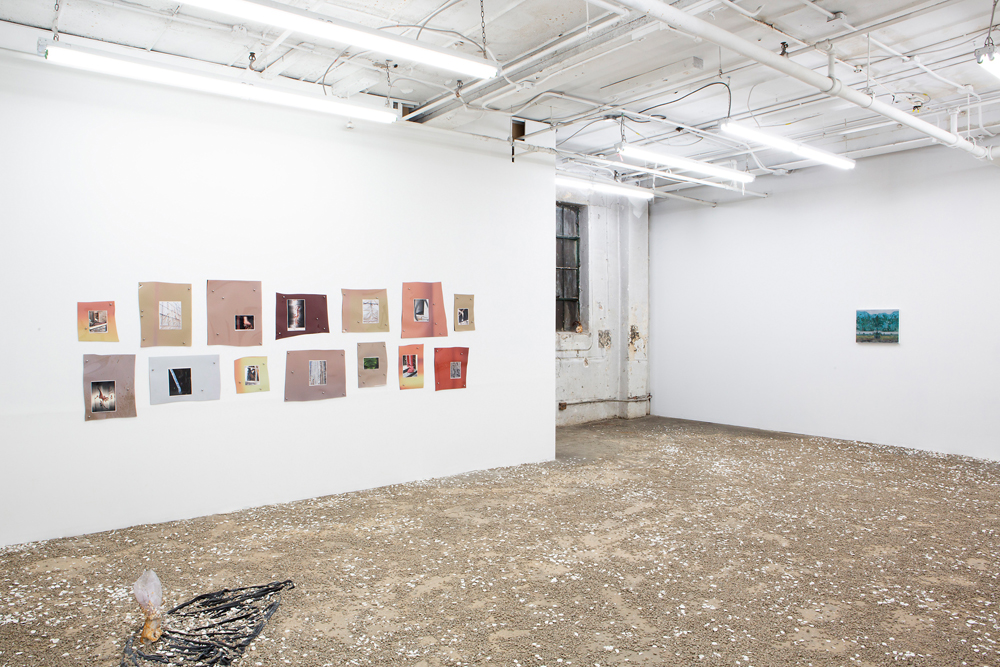
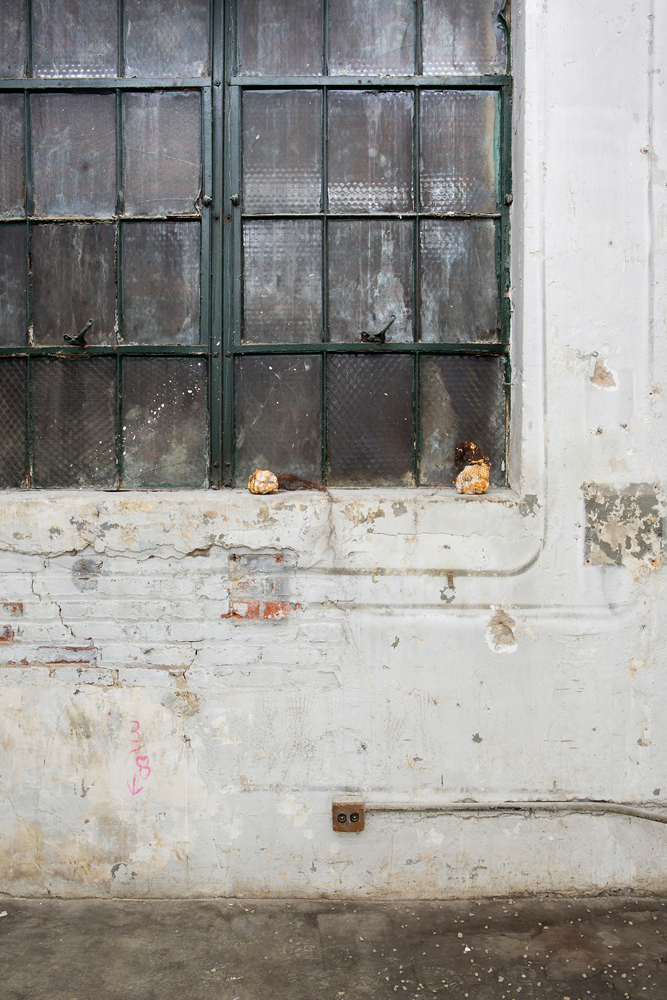
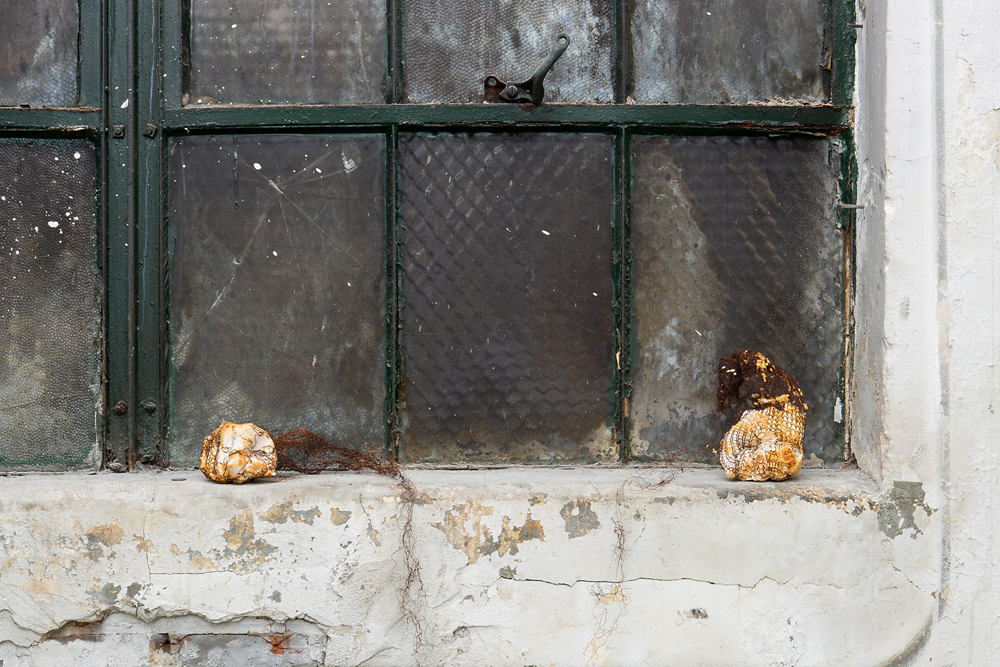
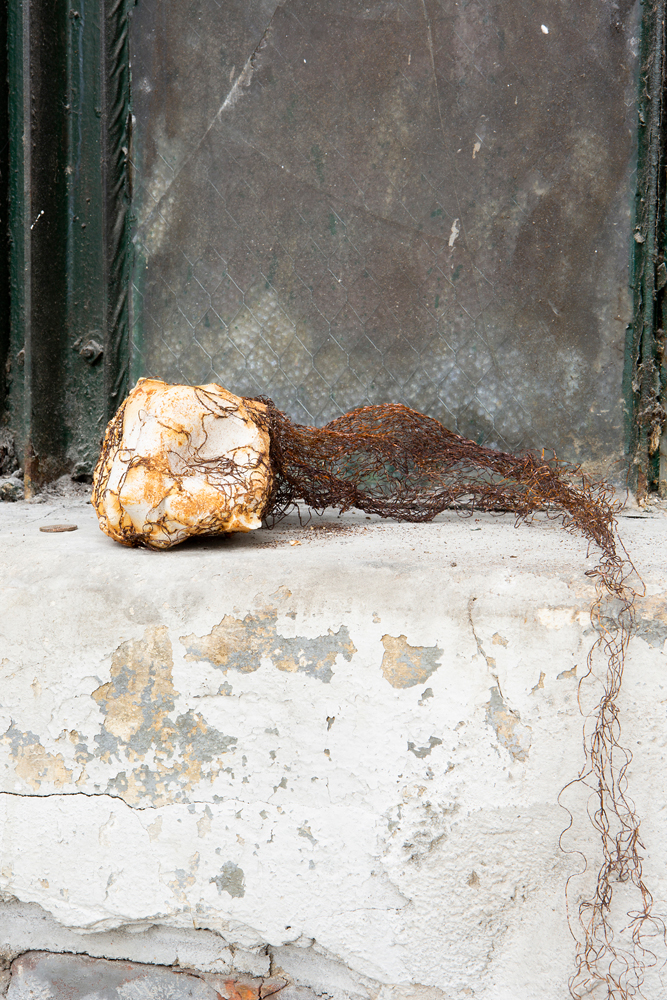
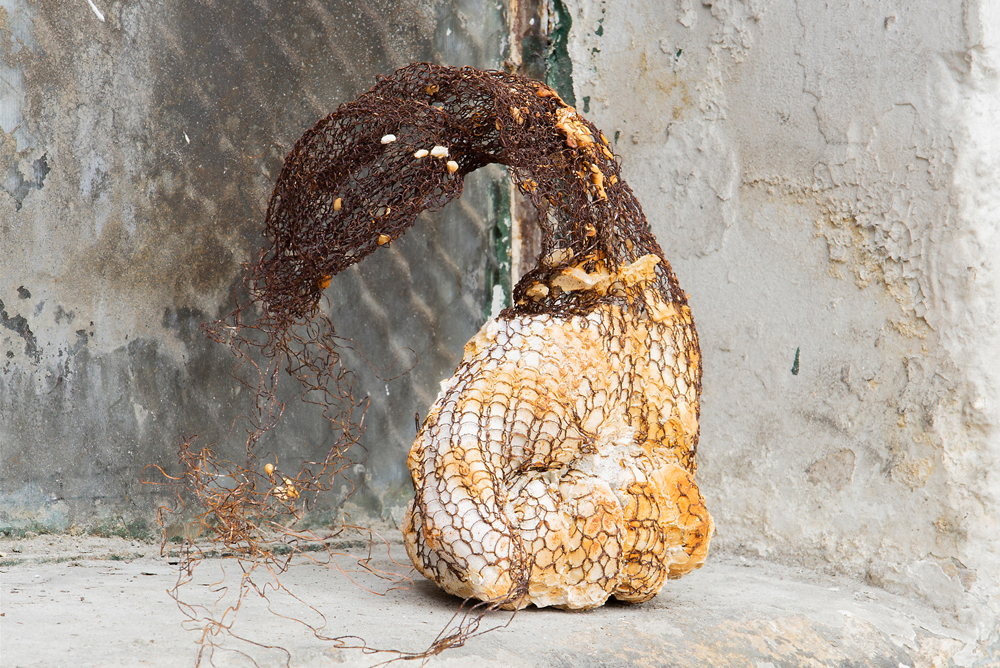
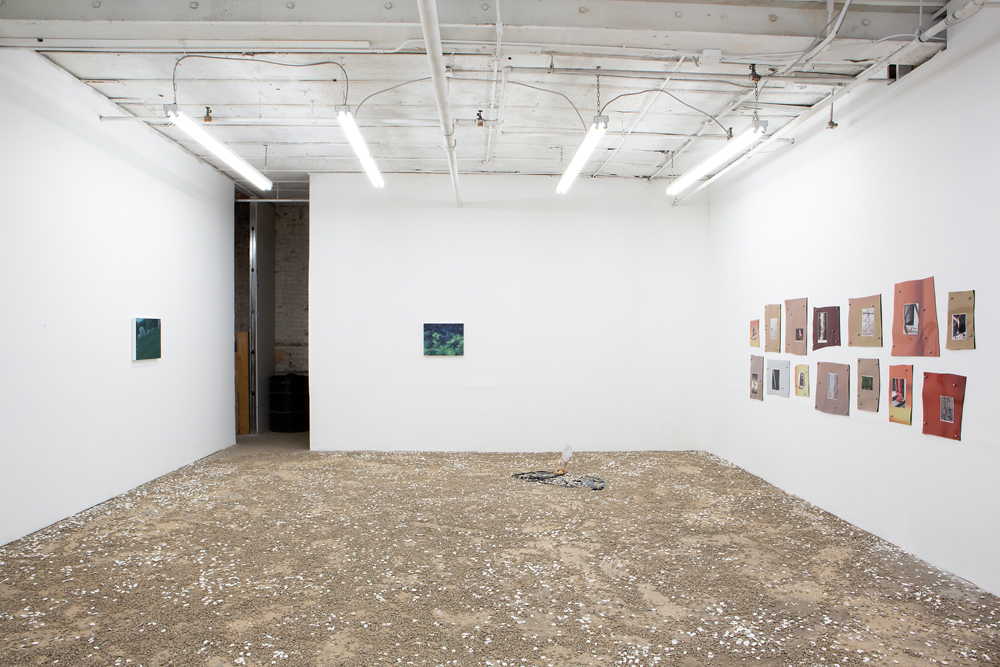
Dig Your Own Hole
Franz Kaka, 291 Ten Eyck, Brooklyn.
February 7 - March 1, 2020
Offsite group exhibition with Jennifer Carvalho, Laurie Kang, and Eve Tagny
Works:
Gap in fence, fist in pocket, 2019. (Installation) Hydrocal, gravel, sand.
Gap in fence, fist in pocket (two fists), 2019. Hydrocal, wire.
Gap in fence, fist in pocket (with purse), 2019. Hydrocal, wire, secondhand beaded purse, discontinued and displaced coins and tokens, altered discontinued Canadian bank note, notes, gravel, sand.
Gap in fence, fist in pocket (with blouse), 2019. Hydrocal, wire, secondhand velveteen blouse, discontinued and displaced coins and tokens, plastic bag, gravel, sand.
Franz Kaka is proud to present Dig Your Own Hole at 291 Ten Eyck, a new gallery share initiated by Deli Gallery in Brooklyn, NY
In March 2019, Franz Kaka presented Every empire has an end, a two-person exhibition featuring the work of Jennifer Carvalho, a painter making images from Tarkovsky’s Stalker, and Jenine Marsh, a sculptor flattening coins on the railway tracks behind her gallery. At the time both artists were interested in the productive potential of territorial transgression; venturing into restricted zones as a means of exiting established modes of being. Dig Your Own Hole extends their initial conversation, while remaining on familiar terrain - depressed flowers, a rubbled ground, fences as foundations - but this new iteration is complicated by the addition of the work of Laurie Kang and Eve Tagny. Here the territory being considered is not only that which has been deemed off limits by those in power, but also the internalized expression of that power as manifest in private spaces, with particular interest paid to the site of the garden.
Gardens are paradoxical places, especially when made private with bars and bricks. Occupying multiple points in time simultaneously, a garden might be planted and grown to cover recent traumas, or trimmed, cut, and uprooted to evidence a fallen system of thought. Offering a restorative respite for those granted access they also reenact the violent division of nature and culture, public and private. Considered here as a transitional space, the artists in Dig Your Own Hole explore our desire to control nature within this setting, examining the ideological motivations expressed in their care, planning, and control. Resisting the desire to let the strange become familiar, Dig Your Own Hole can be read as both a gardener’s instruction and as a labourer’s refusal; partaking in the rituals of the garden while planting seeds of doubt.
-FK
Art Viewer
Tzvetnik